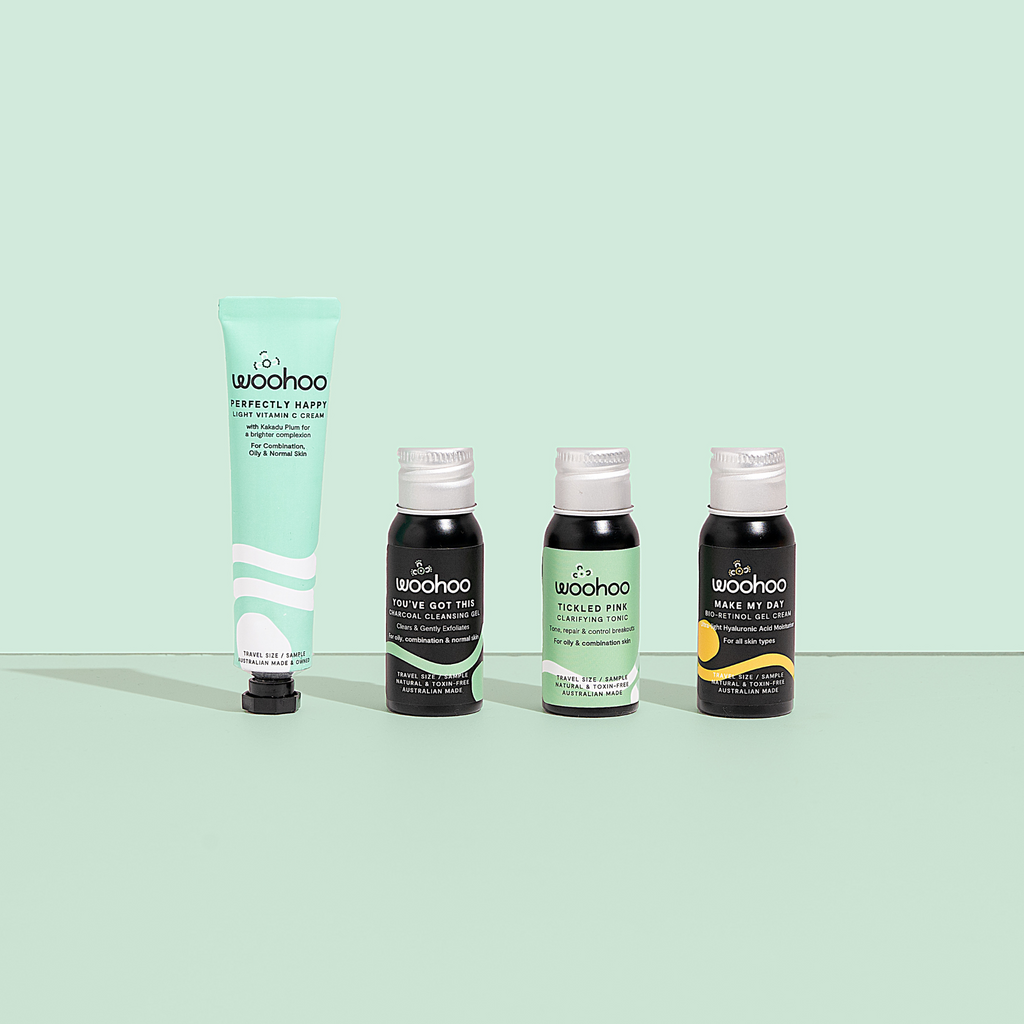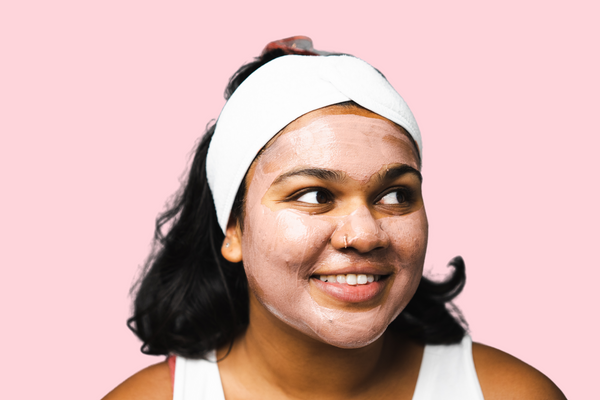Want to know one of the most notorious types of acne? *Cue Jaws theme*
Yep, you guessed it: cystic acne.
The cystic acne variety—which can be triggered by monthly hormonal cycles—can be much more intense to deal with than your average.
There’s no friendship with a pimple that pulsates while you sleep, pulsates when you smile, and then disappears three months later, leaving behind a red or brown mark that takes forever to fade.
These stubborn blemishes aren’t your average surface-level pimples either: they’re deeper, uglier, and a real challenge to get off your face.
Fortunately, it’s not all doom and gloom. There are a bunch of proven methods that will help you show cystic acne at the former door.
But first…
What causes cystic acne?
Cystic acne results from a “perfect storm” in your skin’s pores—they become blocked with oil and dead skin cells, leading to inflammation.
Things get nasty when this inflammation causes the duct under the skin to rupture, leak into the surrounding tissue, triggering pus, increased inflammation, bacterial growth, and more breakouts.
Several factors may be responsible:
- Family history – Like your dad’s quirky sense of humor, cystic acne can be passed down from generation to generation.
- Hormonal Changes – From puberty to menopause, our body rides the hormonal roller coaster and cystic acne is one of the side effects. Fun! However, it is not exclusive to women. Hormonal changes in men can also lead to cystic acne.
- Climate and Way of Life – High humidity, sweat and certain cosmetics can worsen the condition.
- Certain medication – Some medications can interfere with cystic acne.
- Lifestyle – Diet, lifestyle and some not so healthy habits can lead to severe skin rashes.
- A bit of bad luck – Sebaceous glands in some people may be naturally more sensitive to skin irritations, causing a greater and more frequent inflammatory response.
Symptoms on point
Thanks to their characteristic appearance — redness, swelling, pus — cystic acne is quite easy to diagnose without special tests. You may have:
- Large, red, painful bumps on the face, chest, back, arms, shoulders and/or thighs.
- Raised, red nodules (without the white head).
- Damages that are felt before they are seen.
- Acne accompanied by cysts and nodules in addition to papules and pustules.
- Breakouts that crinkle at your touch or even without it.
Cystic acne dos and don’ts
Spoiler alert: there is no such thing as perfect skin, which is okay! However, the truth is that acne in your adult years can be a real pimple. And there’s no shame in wanting to control those powerful strokes. Stop panic googling – we’ve had it.
1. Don’t run away
Hands down! Cystic cells literally cannot burst, since they have no connection to the surface of the skin. Popping will only make the inflammation worse, leaving you with possible scarring and the risk of infection. Even if it’s the tiniest whiteheads on top and you want to make Dr Pimple Popper proud, don’t—cystic acne runs deep, and you’ll always (always) make it worse.
2. Make ice
Icing can actually help your cystic breakouts, to some extent. By applying an ice pack directly to the affected area, you can constrict the small blood vessels that supply the painful cyst, potentially reducing its size and redness. Apply an ice pack wrapped in a paper towel or paper towel to your foot for 1-2 minutes with breaks in between.
3. Don’t be a cow 😉
It’s no secret that dairy can be difficult for some people to digest. And it can also be a real troublemaker when it comes to causing acne breakouts, according to a study by Aghasi et al. (2019). So even if you’re not lactose intolerant, taking a break from dairy can improve your skin.
4. Eat foods rich in probiotics
In a study by Kim et al. (2018), found that acne patients who consumed a Lactobacillus-fermented beverage saw a significant reduction in the number of acne lesions and experienced less oil production over a 12-week period. So, for the love of your skin, don’t shy away from probiotic-rich foods and drinks (looking at you kefir, kombucha, and sauerkraut!).
5. Don’t forget to increase your zinc dose
A review published in Dermatologic Therapy highlighted the potential role of zinc deficiency as a contributor to acne [Gupta et al., 2014]. So go ahead and indulge in some beans, nuts, and whole grains (or our non-vegan friends can nibble on oysters) to ensure you’re getting enough of this essential mineral for your skin’s health.
6. Give yourself a steam facial
Steaming your face can help clear and unclog your pores (although they won’t shrink them). You don’t need any special gadgets, just a kettle, a bowl and a towel will do the trick and have you feeling refreshed after 5 or 10 minutes. Adding skin-soothing herbs and essential oils like rosemary, tea tree, lavender, and eucalyptus are good options when you want to clear cystic acne.
WARNING: Do not get too close to the hot water or let it come into contact with your skin, as this may cause burns or damage to the capillaries
Natural Treatment for Cystic Acne
Gone are the days of using harsh benzyl peroxide and tea tree oil to clear pimples or glycolic acid to rejuvenate skin!
To the rescue: Woohoo products to help take care of cystic acne — and all kinds of pesky acne — once and for all.
In addition to cleansing and moisturizing, consider adding these products to your cystic acne arsenal:
- Before going to bed apply a clay paste and let it do its job. Our personal choice uses the Pig In Mud Mineral Mask mixed with Tickle Pink Clarifying Tonic. Tickled Pink contains White Willow Bark which is high in salicin and the body converts to salicylic acid which is used to reduce inflammation and pain. The clay in the mask helps draw that dirt to the surface so it’s no longer trapped deep in your pores.
- Once the treatment starts, check it FG Serum 02 – Clear to help that popped pimple heal quickly and with minimal scarring. If you like oils, we found it Black seed oil it is also wonderful for skin repair and scar reduction. You can layer the serum and oil together for better results.
- Apply once or twice a week in the evening This Is Me Enzyme Exfoliating Mask – A highly active gel mask that helps reduce the effects of pesky breakouts and doubles as a fantastic spot. Gentle, non-abrasive exfoliants (AHAs, BHAs and PHAs) from fruit enzymes promote healthy skin renewal and a brighter complexion. For a spot treatment, simply dab a small amount onto the blemish. Please watch your skin carefully when doing this and if your skin starts to show redness or tingling, it’s time to remove it.
- For extra healing power, Colloidal Silver in Mud mask for you Pink Clay Mask is a powerful anti-inflammatory that can help reduce redness and encourage skin recovery and repair from pimples. Use as you would a normal mask 1-2 times a week (alternating between this and This Is Me Enzyme Exfoliating Mask).
Most of the goodies we mentioned above can be found in our deluxe sample pack for oily and acne-prone skin.

Clear + Calm Sample Pack (For Oily Skin / Acne / Teens)
$36.85 – $75.20
SHOP NOW
If your cystic acne just can’t take the hint, you may need to work with a dermatologist and/or skin naturopath to completely treat your cystic blemishes, especially if you’re experiencing more than 1-2 attacks a month. Never be afraid to ask for help if things go a little wrong! And remember, bumps and lumps don’t make you any less of a person. You are gorgeous and gorgeous just the way you are, but it’s okay to want to feel good and glow in the skin you are 😊
bibliographical references
- Aghasi, M., Golzarand, M., Shab-Bidar, S., Aminianfar, A., Omidian, M., & Taheri, F. (2019). Dairy product intake and acne development: A meta-analysis of observational studies. Department of Community Nutrition, School of Nutrition and Dietetic Sciences, Tehran University of Medical Sciences, Tehran, Iran. Retrieved from here.
- Gupta, M., Mahajan, VK, Mehta, KS, & Chauhan, PS (2014). Zinc therapy in dermatology: a review. Dermatology Research and Practice, 2014, 709152. Retrieved from here.
